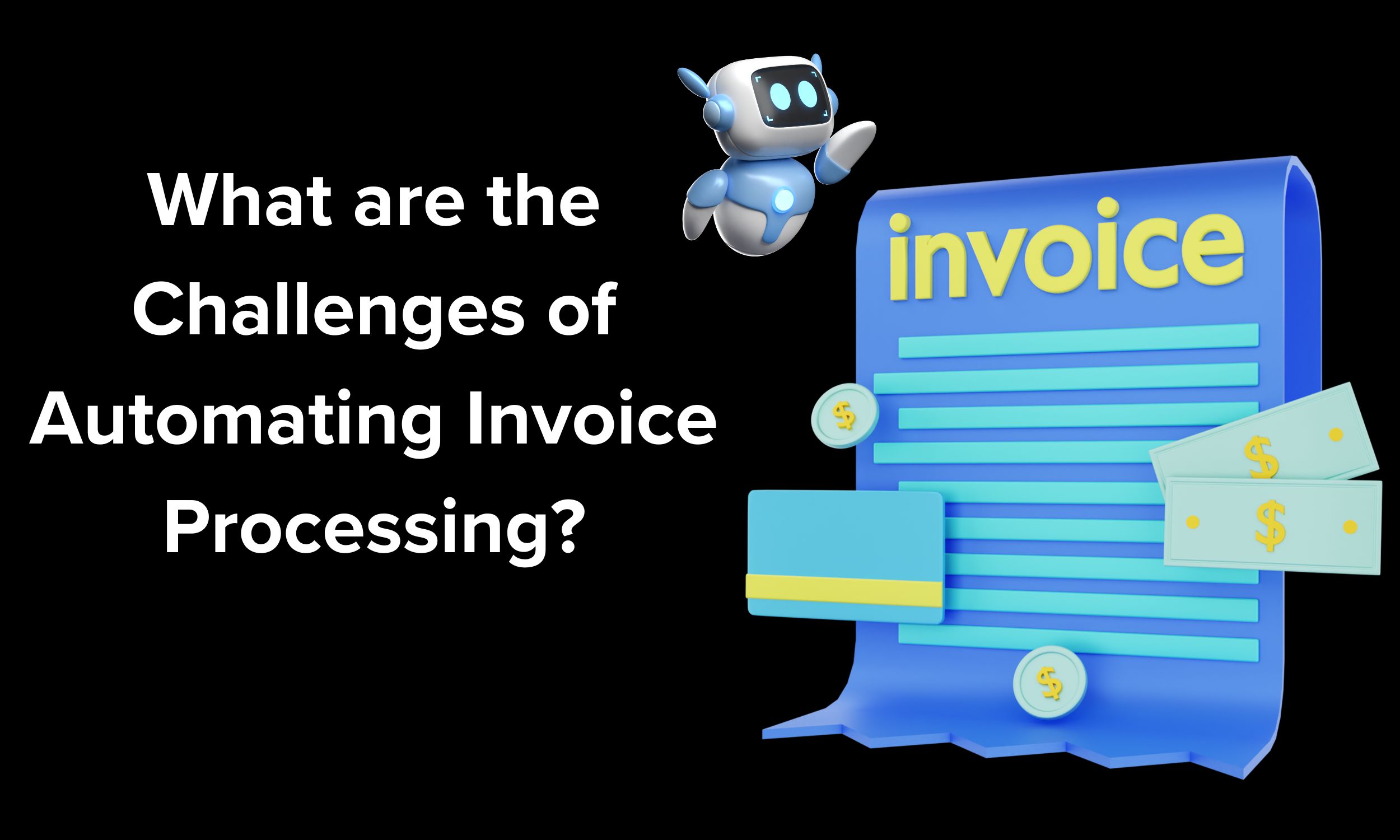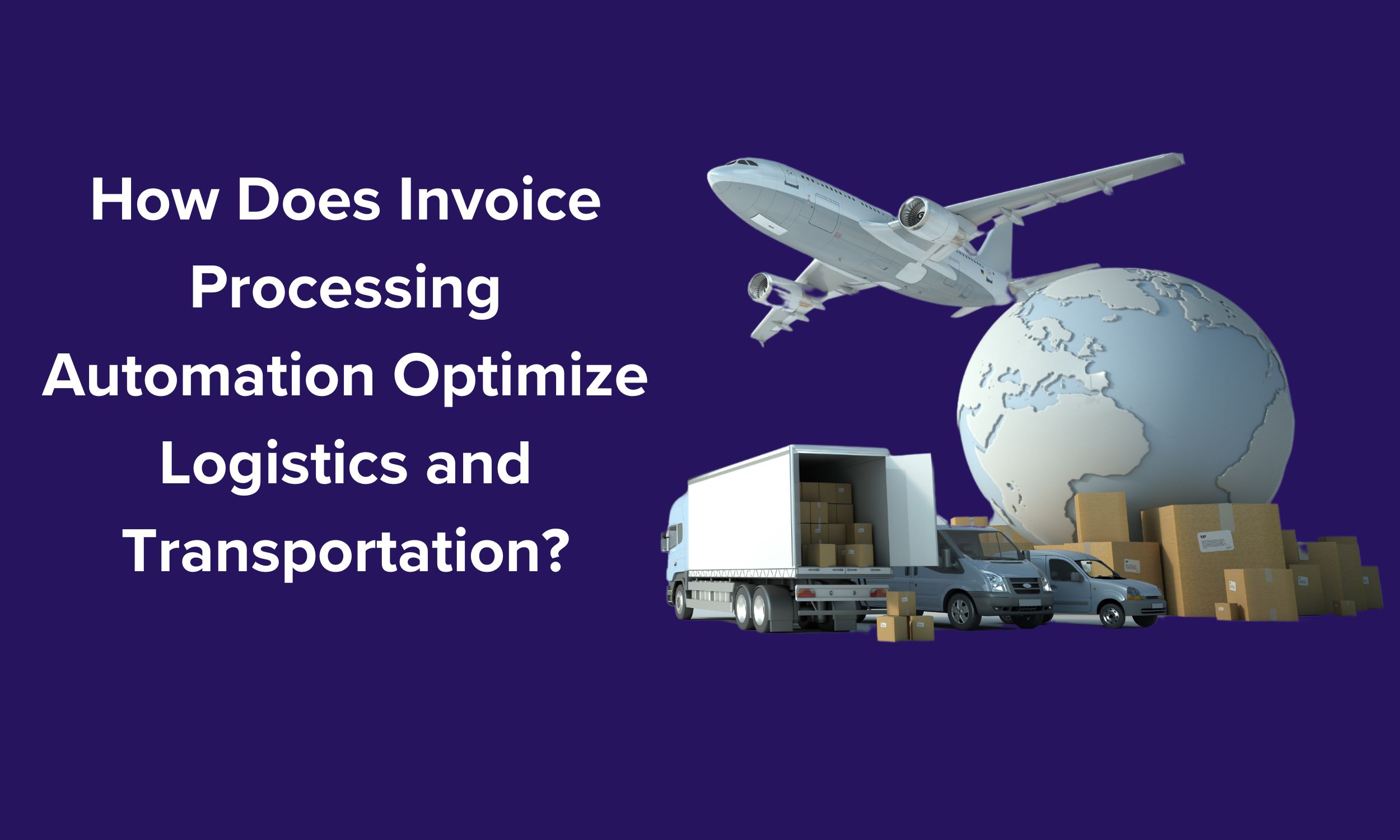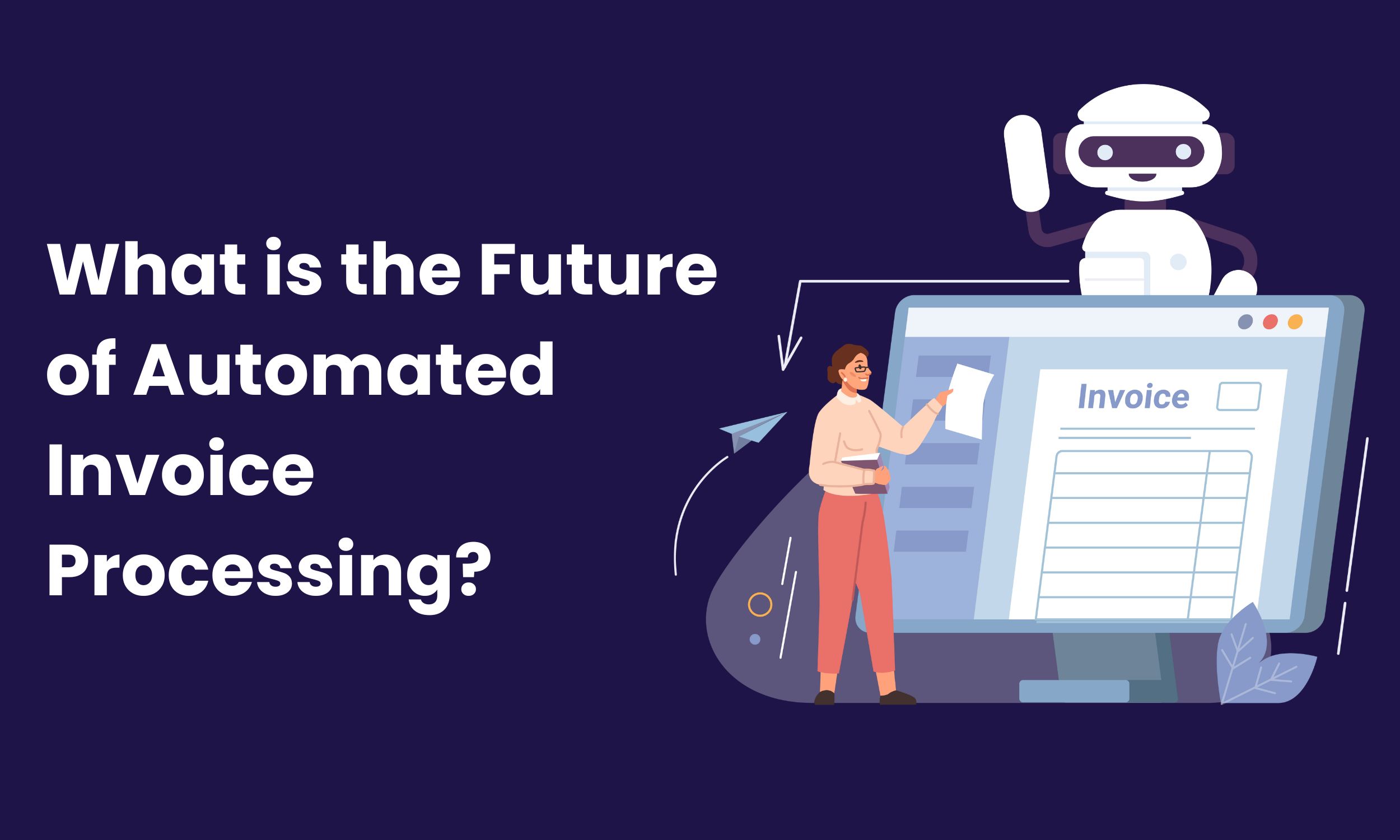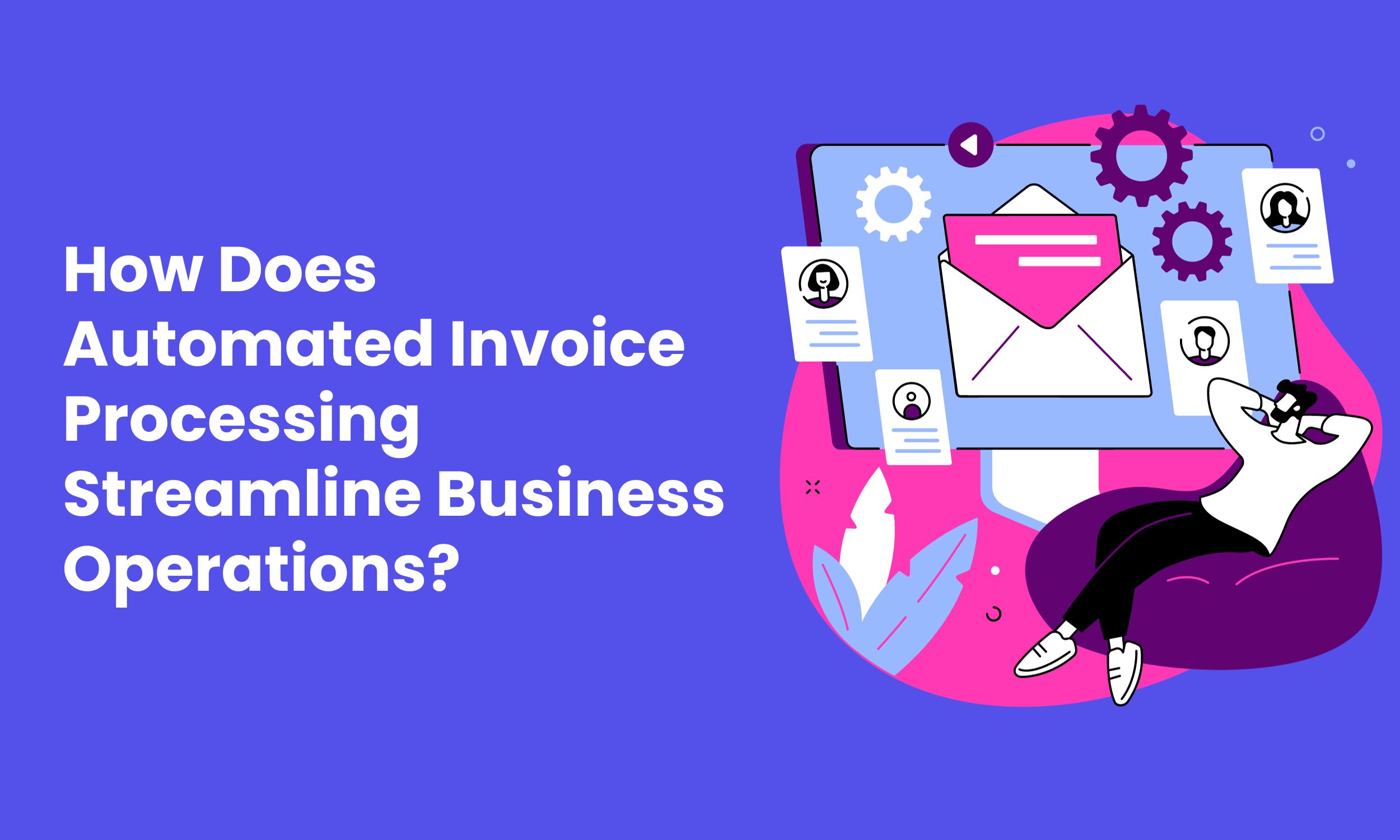What are the challenges of Automating Invoice Processing?
Invoice processing is a crucial function for businesses, regardless of their size. It encompasses receiving, reviewing, and processing invoices to ensure accurate payments and maintain proper financial records. Traditionally, this task has been done manually, consuming significant time and resources. However, with the advancements in technology, more and more businesses are embracing automation to streamline their invoicing processes. Although automating invoice processing brings about numerous benefits, it also presents several challenges that need to get sort out to ensure successful implementation. In this article, we will delve into some of the key challenges associated with automating invoice processing and explore potential solutions to overcome them.
Challenges and Solutions of Automating Invoice Processing
1. Data Extraction and Accuracy
One of the primary challenges in automating invoice processing is accurately extracting relevant data from invoices. Invoices come in various formats, including paper-based, PDF, and electronic invoices, each with its own unique structure and layout. Extracting data such as invoice numbers, dates, line items, and vendor information requires sophisticated optical character recognition (OCR) technology that can accurately interpret and capture the information.
Solution: Implementing advanced OCR algorithms that can handle diverse invoice formats and accurately extract data is crucial. Over time, OCR systems can be trained to recognize patterns using machine learning and natural language processing techniques. Additionally, manual intervention may be required for exceptions and verification of extracted data to ensure accuracy.
2. Invoice Variability and Complexity
Invoices can vary significantly in terms of structure, layout, and content. Vendors may use different invoice templates or formats, making creating a one-size-fits-all automation solution challenging. Additionally, invoices can contain complex line item details, multiple tax rates, discounts, and other variables, which further complicate the automation process.
Solution: Developing a flexible and adaptable automation system that can handle a wide range of invoice formats is essential. Machine learning algorithms can be employed to analyze and classify invoices based on their structures, enabling the system to adapt and learn from new invoice variations. Moreover, utilizing rules-based systems and intelligent algorithms can help handle complex line item details and calculate taxes and discounts accurately.
3. Invoice Exceptions and Discrepancies
Invoices often have exceptions and discrepancies that require manual intervention. For example, an invoice might contain incorrect pricing, missing information, or a mismatch between the purchase order and the invoice. Automating the identification and resolution of such exceptions can be a significant challenge.
Solution: Implementing an exception handling mechanism is crucial for addressing invoice discrepancies. This can involve setting up automated rules and workflows to flag invoices with exceptions and route them to the appropriate personnel for review and resolution. Additionally, machine learning models can be trained to identify common exception patterns and suggest resolutions, reducing the manual effort required.
4. Integration with Existing Systems
Integrating existing financial and enterprise resource planning (ERP) systems is necessary to automate invoice processing. However, integrating automation technology with legacy systems can take time and effort. Many organizations still need to rely on outdated systems that need the necessary APIs or data interchange formats for seamless integration.
Solution: Utilizing middleware or integration platforms can simplify the process of connecting automation solutions with existing systems. These platforms act as intermediaries, allowing data to flow between different systems without the need for extensive custom coding. Additionally, leveraging standard data interchanges formats like XML or JSON can facilitate seamless integration with minimal effort.
5. Security and Data Privacy
Automating invoice processing involves handling sensitive financial and vendor data. Ensuring data security and privacy is paramount to protect against unauthorized access, data breaches, and compliance violations. Automation systems must adhere to strict data protection regulations, such as the GDPR or the CCPA.
Explore the challenges of Automating Invoice Processing now!

Explore our other insights!

What is Automated Invoice Processing?
Introduction Manual invoice handling is time-consuming, error-prone, and outdated. In today’s digital age, businesses are turning to automated

Step-by-Step Guide to Implementing Automated Invoice Processing
Processing invoices by hand is both labour‑intensive and error‑prone, particularly for growing businesses. As transaction volumes rise, so
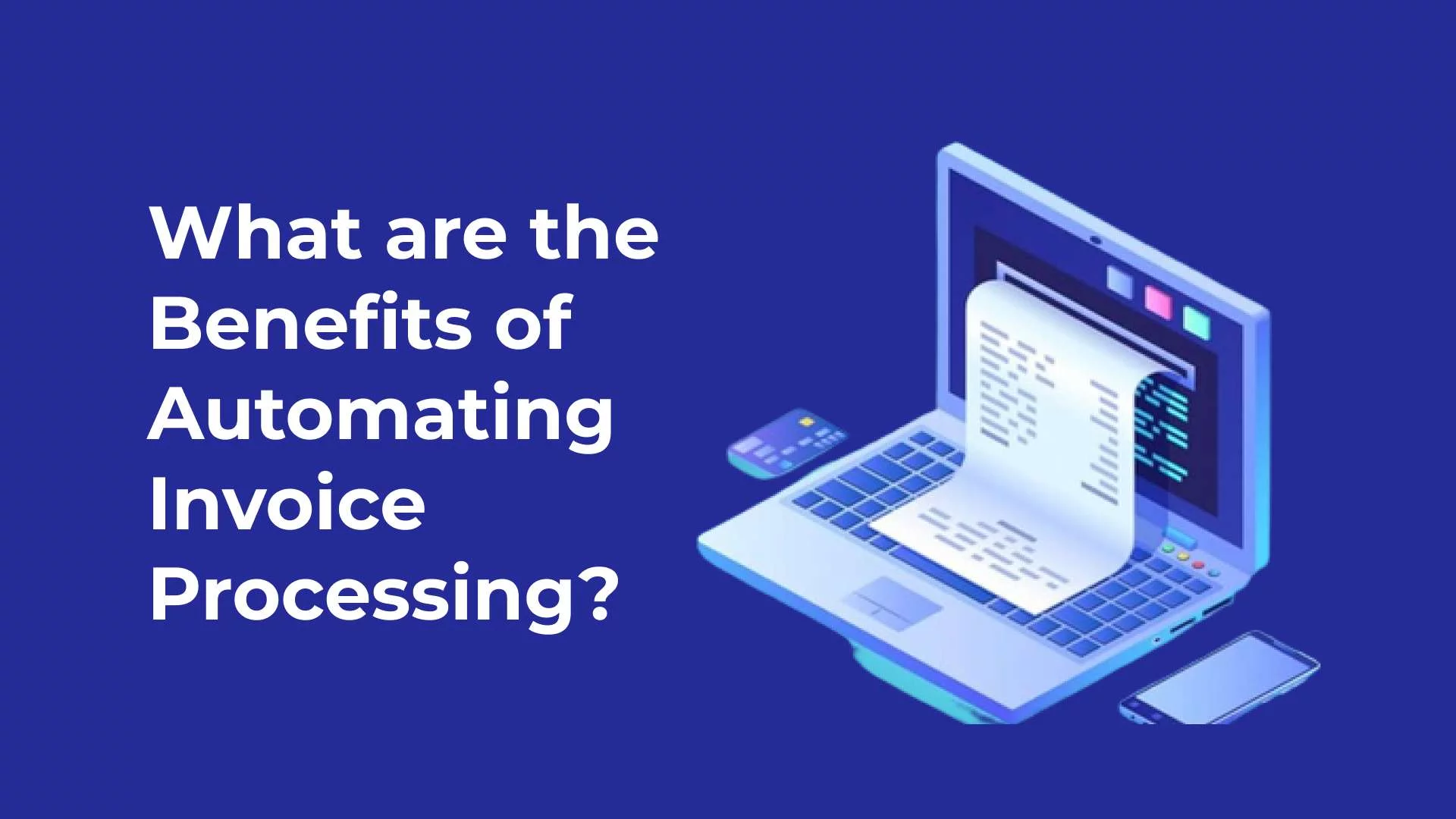
What are the Benefits of Automating Invoice Processing?
What are the benefits of Automating Invoice Processing? The issue of manual invoice processing is widespread in various
Solution: Implementing robust security measures, including data encryption, access controls, and secure data storage, is crucial for protecting sensitive information. Compliance with data protection regulations should be a priority, and regular audits and assessments can help ensure ongoing adherence to the required standards. Collaborating with reputable automation solution providers who prioritize data security can also mitigate potential risks.
6. Change Management and User Adoption
Implementing automation in any business process requires effective change management and user adoption. Employees who have been accustomed to manual invoice processing may resist or find it challenging to adapt to automated systems. Lack of proper training, communication, and support can hinder successful adoption and utilization of the automation solution.
Solution: Comprehensive change management strategies should be employed to prepare employees to transition to automated invoice processing. This includes providing clear communication about the benefits of automation, offering training programs to educate employees on system usage, and addressing any concerns or questions they may have. Additionally, involving key stakeholders from the beginning and gathering their feedback can help improve user adoption and overall satisfaction.
Unveil the hurdles of Automating Invoice Processing. Dive in now!

Best Practices for Automating Invoice Processing
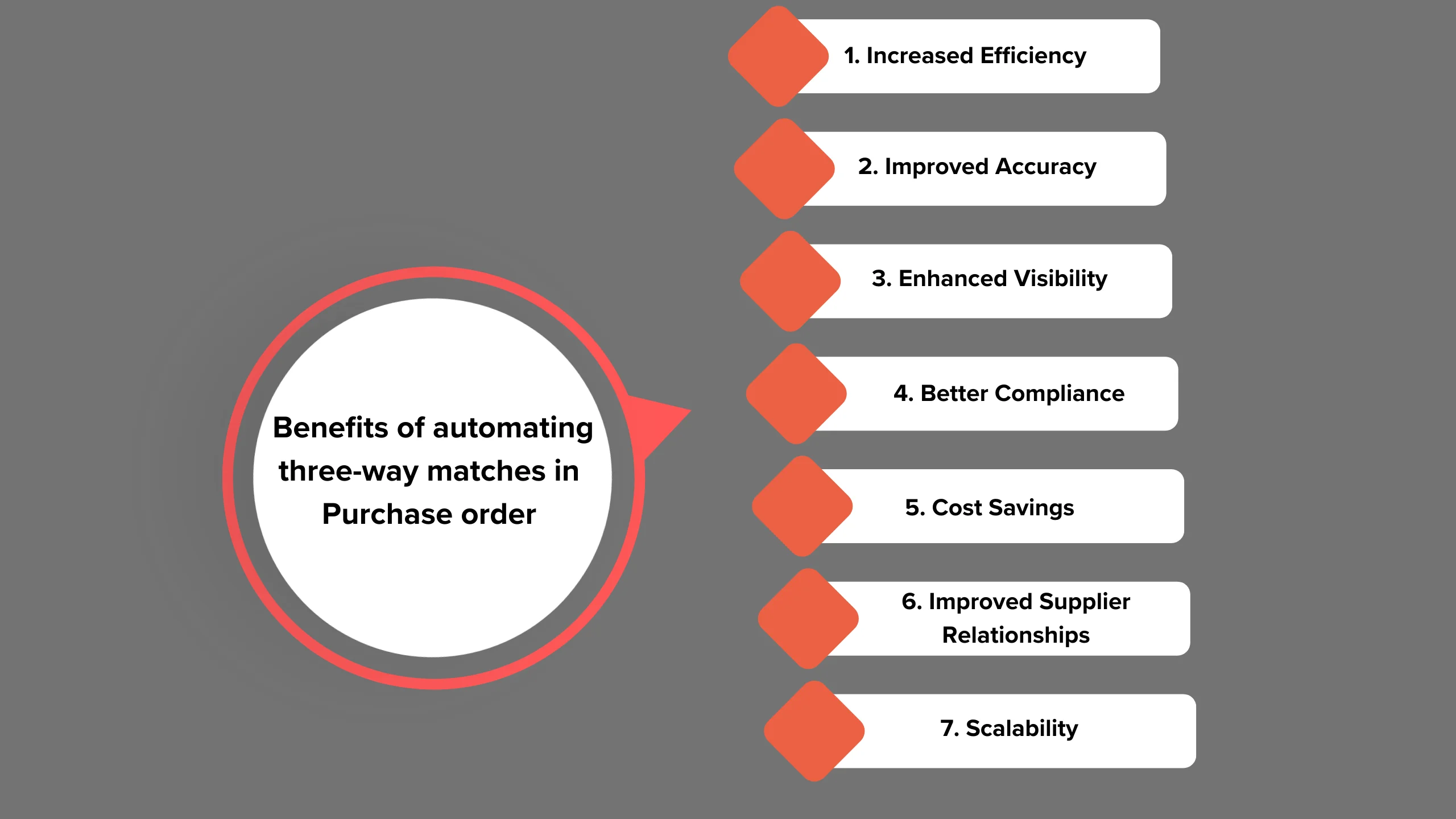
1. Evaluate and Select the Right Solution
Before embarking on the automation journey of invoice processing, organizations should conduct a thorough evaluation of various solutions available in the market. This evaluation process involves considering several important factors to ensure the selection of the right solution that meets their specific needs and objectives.
The accuracy of data extraction is a crucial aspect to consider. Organizations should assess the capabilities of different solutions in accurately extracting data from invoices, especially when dealing with non-standard invoices or complex layouts. The chosen solution should have a high level of accuracy to minimize errors and ensure reliable data extraction.
Integration capabilities are another vital consideration. Organizations should evaluate how well the automated invoice processing solution can integrate with existing systems such as enterprise resource planning (ERP) or accounting software. Seamless integration is essential to enable smooth data transfer and synchronization, minimizing manual intervention and reducing the risk of errors.
Scalability is an essential factor, especially for organizations with growing invoice volumes. The chosen solution should be capable of handling increasing invoice loads without compromising performance or requiring significant system upgrades. Scalability ensures that the automated invoice processing system can grow alongside the organization’s needs.
Ease of use is crucial for the successful adoption and utilization of the automated solution. Organizations should consider the user-friendliness of the system, including the intuitiveness of the user interface, ease of configuration, and accessibility of features. A user-friendly solution promotes efficiency and reduces the learning curve for employees.
Vendor support is another key consideration. Organizations should assess the level of support provided by the solution provider, including technical assistance, training resources, and responsiveness to inquiries or issues. Strong vendor support ensures that any challenges or questions that arise during implementation or ongoing usage can be addressed promptly and effectively.
2. Ensure Data Accuracy through Validation
Automated data extraction is a core component of invoice processing automation. However, to enhance data accuracy and reliability, organizations should implement validation mechanisms as part of the automation workflow.
Validation involves verifying the extracted data against predefined rules and criteria. For instance, the automated system can match the details extracted from invoices with corresponding purchase orders or contract terms to ensure consistency and accuracy. Validating vendor information helps ensure that the invoices are coming from legitimate and authorized sources.
Additionally, implementing checks for potential duplicates or anomalies is crucial to identify and resolve any discrepancies or errors. By setting up validation rules, the system can flag invoices that deviate from expected patterns, enabling manual review and resolution of issues before further processing.
Well-defined validation processes contribute to reliable and error-free invoice processing, reducing the risk of incorrect data entry, misinterpretation, or processing of fraudulent invoices. Regularly reviewing and refining validation rules based on the organization’s specific requirements and past error patterns helps improve data accuracy over time.
3. Establish Robust Approval Workflows
Efficient and streamlined approval workflows are essential for effective automated invoice processing. Organizations should design approval workflows that align with their internal policies, hierarchies, and authorization requirements.
The automated system should support multiple approval levels, enabling invoices to be routed to the appropriate personnel or departments based on predefined rules. This ensures that invoices are reviewed and approved by the relevant stakeholders in a timely manner, reducing delays in the payment cycle.
Exception handling is another critical aspect of approval workflows. Organizations should define processes for handling exceptions, such as invoices that exceed certain thresholds, require additional documentation, or deviate from standard processing rules. Designating specific paths and procedures for exceptions streamlines the workflow and ensures that exceptional cases receive appropriate attention while maintaining efficiency for regular invoice processing.
Notifications play a crucial role in keeping stakeholders informed about the status of invoices and pending approvals. The automated system should provide notifications or alerts to relevant personnel at each stage of the approval process. These notifications help minimize bottlenecks, ensure timely action, and enable effective communication between stakeholders involved in the invoice processing workflow.
A well-defined approval workflow, supported by the automated system, not only accelerates the payment cycle but also ensures compliance with authorization requirements and internal policies. It establishes a transparent and auditable process, reducing the risk of unauthorized or inappropriate approvals.
4. Monitor and Audit Automated Processes
Implementing an automated invoice processing system is not a one-time endeavour. Organizations should regularly monitor and audit automated processes to ensure ongoing success and optimal performance.
Monitoring the performance and accuracy of the automated system is crucial to identify any issues or anomalies. Organizations should establish key performance indicators (KPIs) to measure process efficiency, such as invoice processing time, error rates, and cost savings. Regularly tracking these KPIs helps organizations identify areas for improvement, optimize processes, and benchmark performance against set targets.
Conducting periodic audits of the automated invoice processing system is essential to verify compliance with internal controls and regulatory requirements. Audits help identify any deviations from established processes, detect potential risks or fraudulent activities, and ensure adherence to financial and data security standards. Organizations should establish a systematic audit schedule and engage relevant stakeholders, including internal or external auditors, to conduct thorough reviews of the automated processes.
Continuous monitoring and improvement contribute to an optimized invoice processing workflow. By addressing any identified issues promptly, organizations can maintain high accuracy, efficiency, and compliance in their automated invoice-processing operations.

Conclusion
Automating invoice processing offers significant advantages, including increased efficiency, reduced errors, and improved cost savings. However, it is essential to address the challenges associated with automation to ensure successful implementation. Businesses can overcome these challenges and take benefits of automated invoice processing if they leverage advanced OCR technology, develop adaptable systems, handle exceptions efficiently, integrate with existing systems, ensure data security, and focus on change management. Embracing automation in this critical financial process can streamline operations, enhance accuracy, and free up valuable resources for more strategic tasks.
FAQs
1: What are the challenges of automating invoice processing?
A: The challenges of automating invoice processing include data extraction from non-standard invoices, integration with existing systems, change management, employee adoption, security, and data privacy.
2: What issues can arise with data extraction from invoices?
A: Data extraction challenges may arise with non-standard invoices, complex layouts, handwritten information, or poor print quality, impacting the accuracy of automated data extraction.
3: How can integration with existing systems pose a challenge?
A: Integrating an automated invoice processing system with existing financial systems, such as ERP or accounting software, can be complex, requiring compatibility, data synchronization, and careful planning to avoid disruptions.
4: Why is change management important in automating invoice processing?
A: Change management is crucial to address employee resistance and facilitate the smooth adoption of automated invoice processing, ensuring a successful transition from manual processes.
5: What security concerns are associated with automating invoice processing?
A: Security concerns include protecting sensitive financial data from breaches, implementing secure data transmission protocols, role-based access controls, and compliance with data privacy regulations.
Contact Us
Let's Talk About Your Project
- Free Consultation
- 24/7 Experts Support
- On-Time Delivery
- sales@sdlccorp.com
- +1(510-630-6507)

